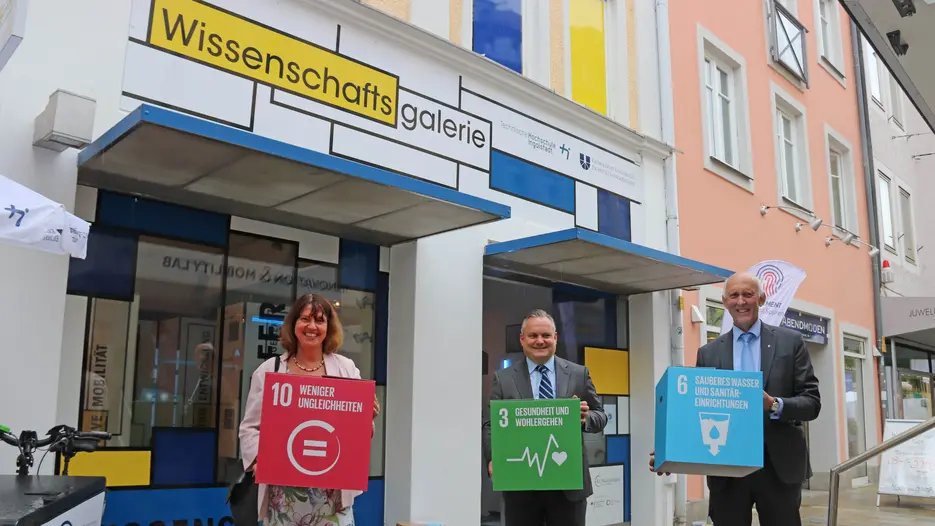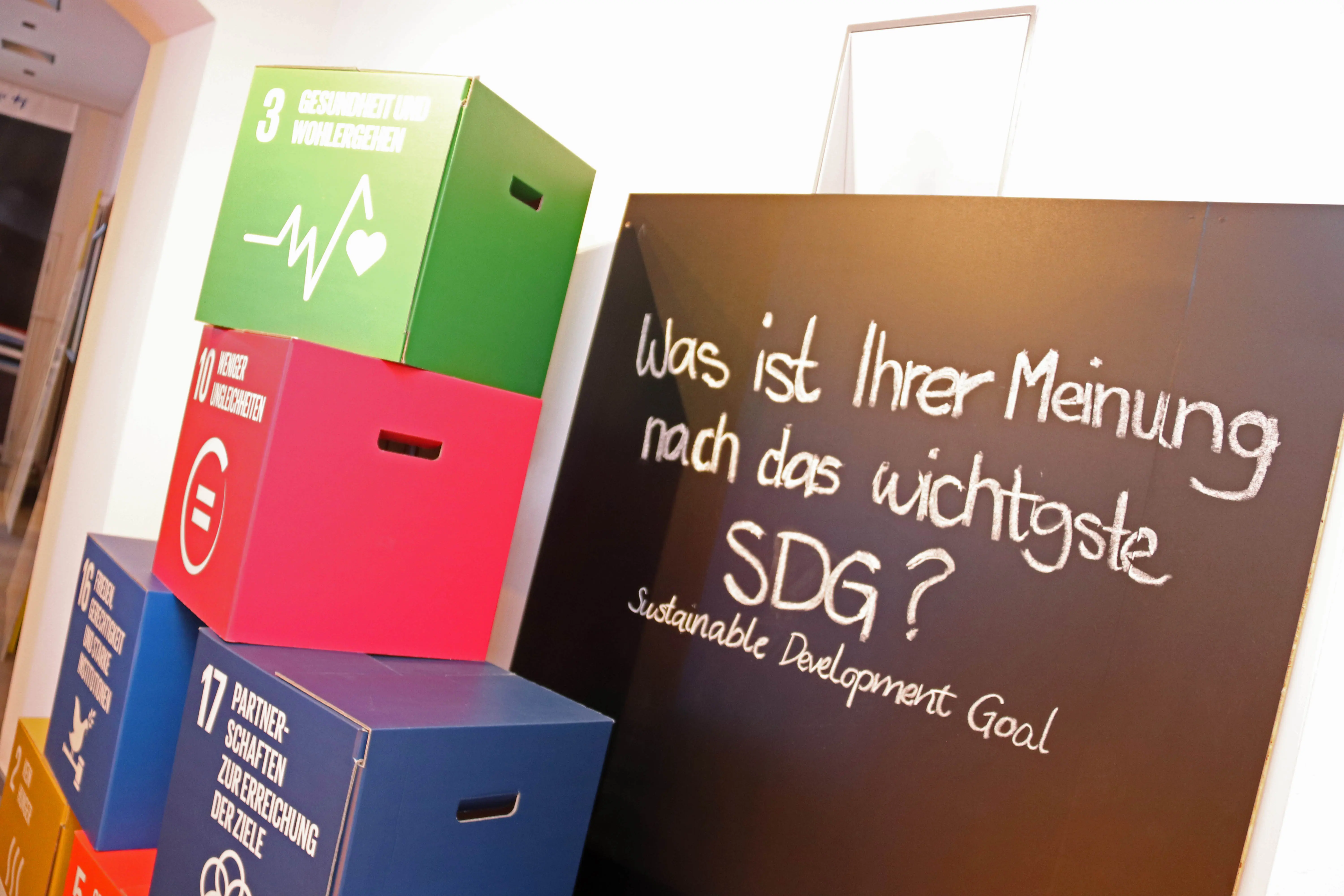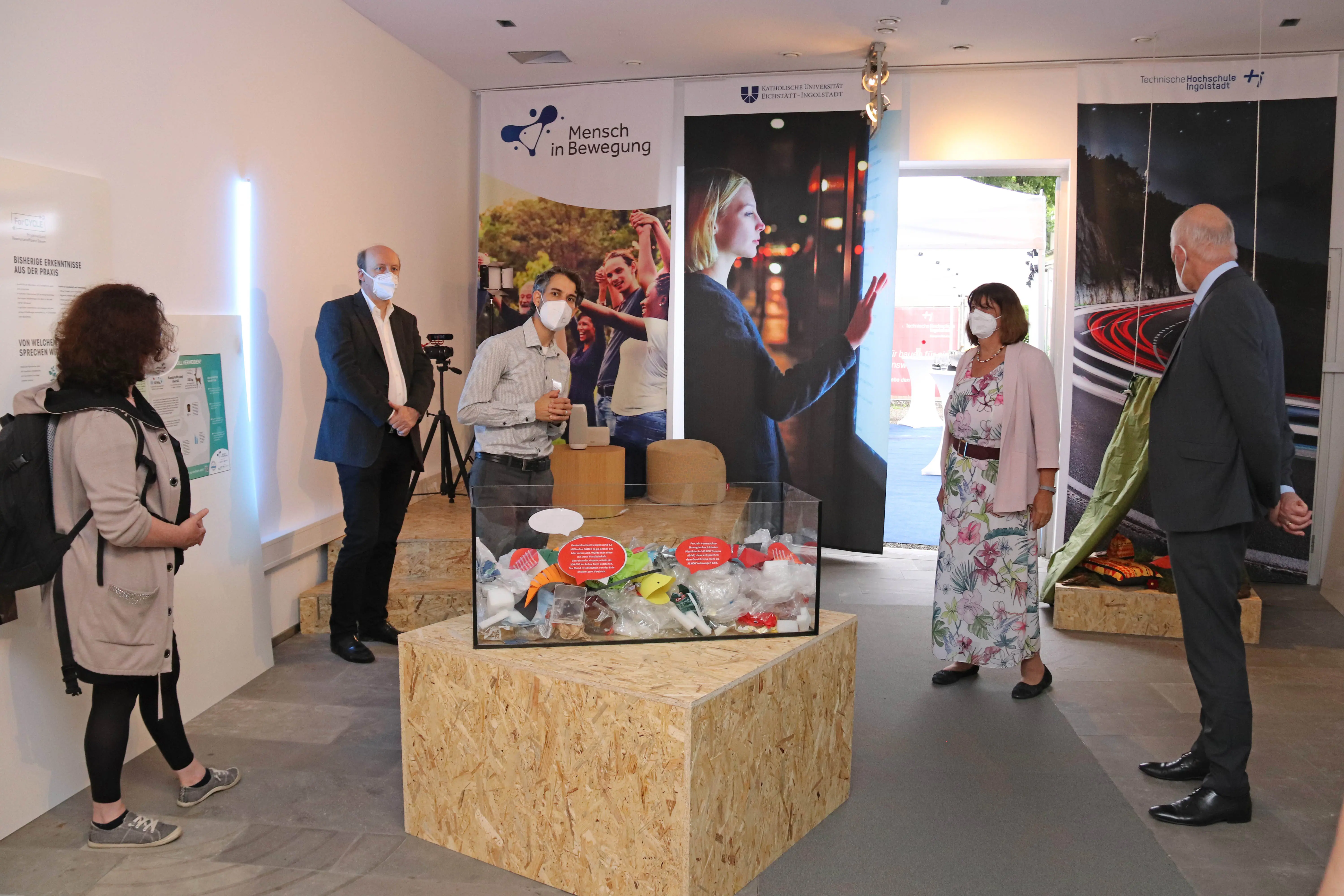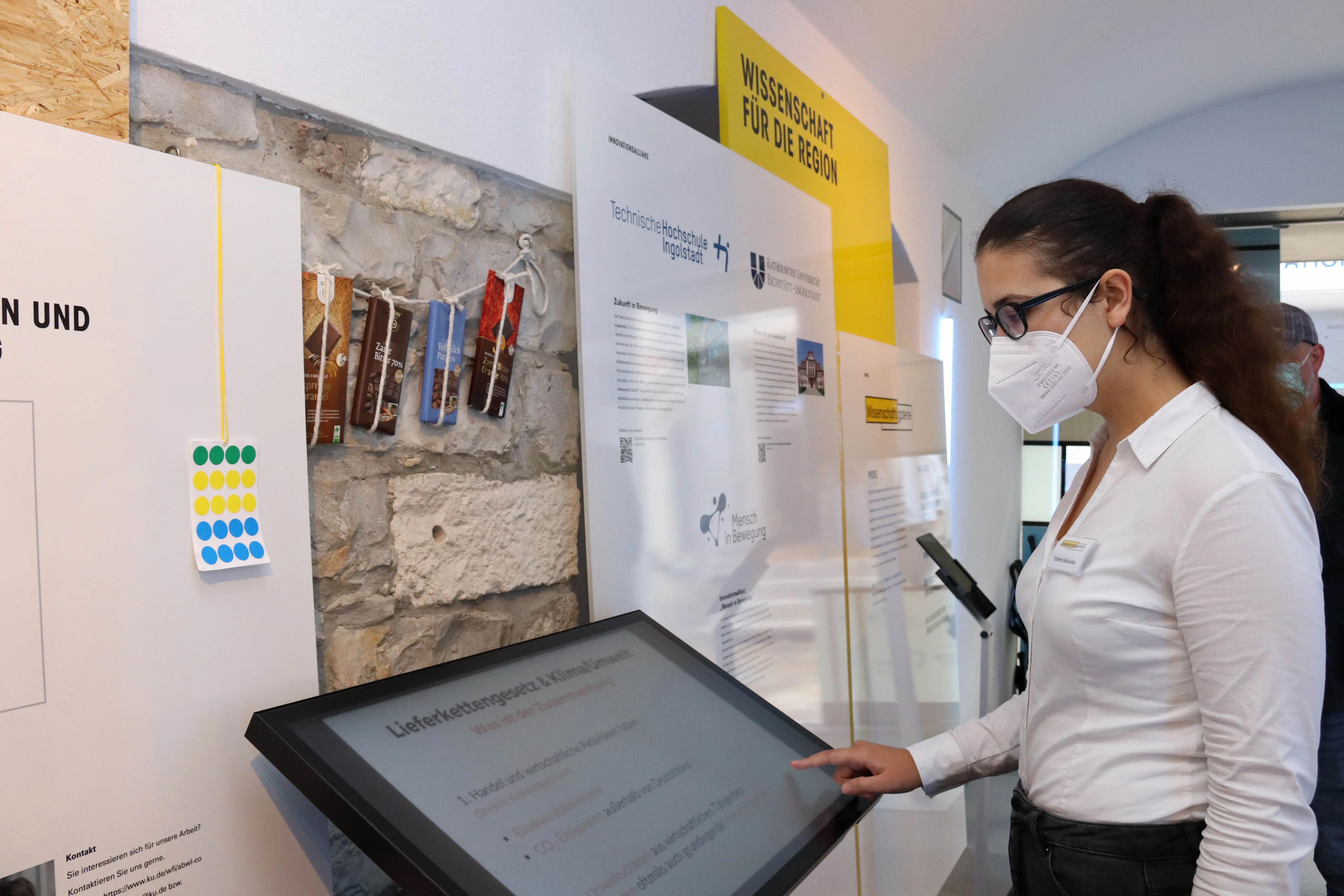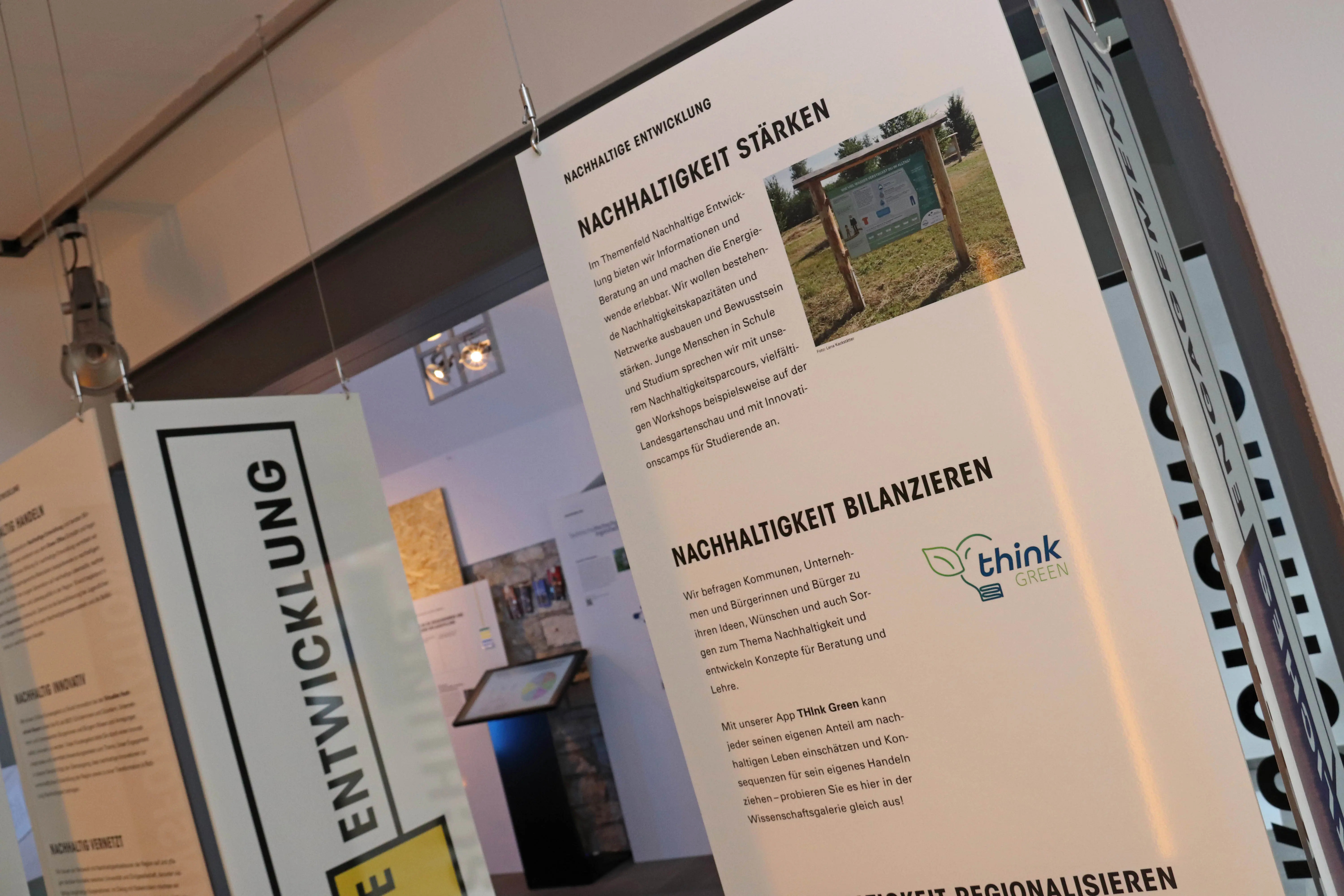The science gallery, a joint project of the Ingolstadt University of Technology (THI) and the Catholic University of Eichstätt-Ingolstadt (KU), sees itself as a "showcase for science" and a meeting place. From Monday to Friday afternoons as well as Saturday mornings, the public can see research results presented in a comprehensible way. "Research becomes concrete, we want people to see how it affects their everyday lives," is how transfer manager Dr. Marion Kühn explains the project.
"With the science gallery, research results come to the citizens. Science becomes tangible," said THI President Prof. Dr. Walter Schober at the opening, which was also attended by the Ingolstadt Mayor Christian Scharpf and numerous other guests of honor. “We are looking forward to discussions with the public. After all, it is of great concern to us to further develop research in a broad dialog. Communication at a central location in the city center of Ingolstadt offers excellent conditions for this purpose," emphasizes KU President Prof. Dr. Gabriele Gien. For Mayor Dr. Christian Scharpf, "Half-knowledge leads to fake news and conspiracy theories. That's why it's necessary to reduce the complexity of topics to make them available for a broad audience." According to him, through the science gallery, scientific findings can reach the heart of everyday life.
At the kick-off, the gallery will focus on the topic of sustainability. Its themed exhibitions will change several times, each new topic in turn accompanied by events and workshops. The gallery, which until recently housed the "Fahrerlos," is divided into different thematic areas. Right at the beginning - under the motto "Science for the Region" - the universities introduce themselves and explain the intention of the science gallery. The "Mensch in Bewegung" project, from whose center the Science Gallery emerged, also presents itself with its four clusters ("Sustainable Development," "Civic Engagement," "Innovative Mobility" and "Digital Transformation"). For the Neuburg campus, currently under construction, sustainability and ecology are also a top priority and will be presented along with Neuburg’s unique degree programs.
An aquarium filled with different kinds of plastic waste can be the starting point for interested visitors to learn more about the topic and get tips on how to avoid waste and shop sustainably. The KU's "Sustainable Supply Chains" project informs on the fact that environmental protection is much more than just avoiding plastic waste. Visitors to the science gallery can get active, for instance by taking part in surveys and making a contribution to the feedback board. And anyone who wants to try out the energy transition tool for region 10 and the Think green app has also come to the right place.
While the kids are happily playing in the kid’s corner, the adults can stroll through the gallery and talk to each other over a coffee at the bar. "Exchanging ideas with people is very important to us," says Marion Kühn. That's why we also hold "transfer.talks," digital discussion groups on various topics, on the stage of our science gallery.
The science gallery is open from Mondays to Fridays from
3 to 6 p.m., and Saturdays from 10 a.m. to 2 p.m.
